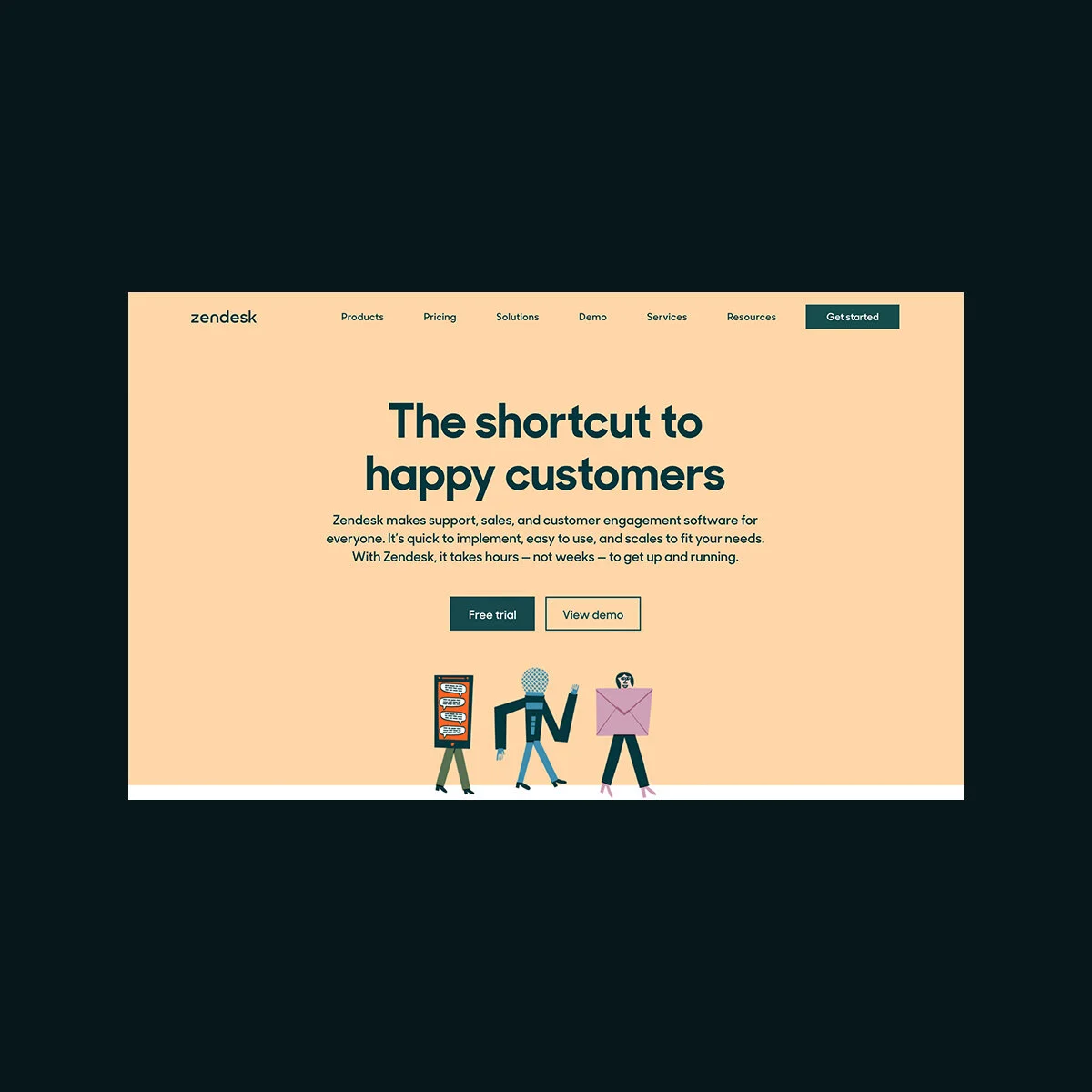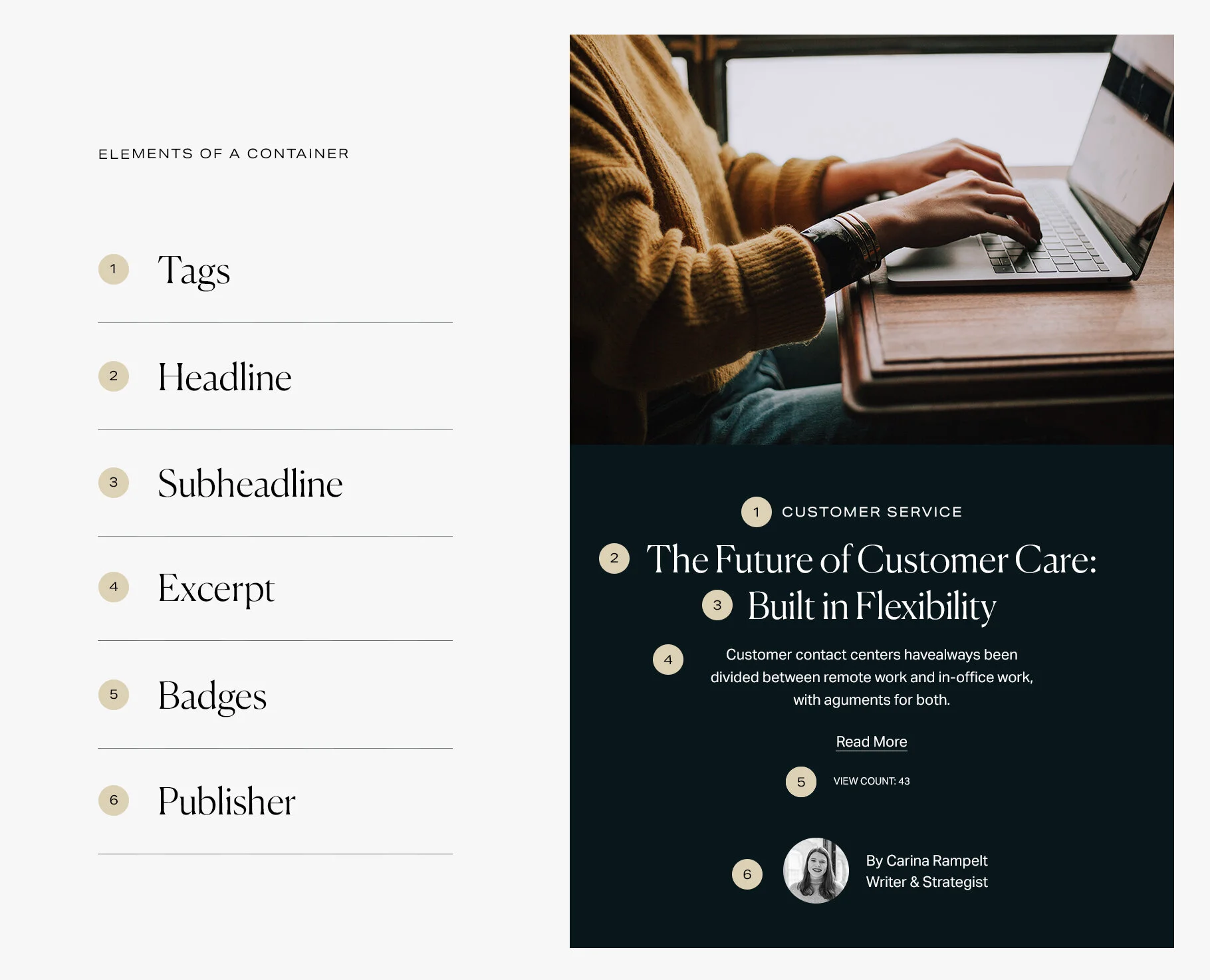
I’ve spent the last several months studying how good headlines are crafted. After conversations with six experts, including The Content Marketing Institute’s own Director of Blog Operations, Lisa Dougherty and VP of Editorial Kim Moutsos, I've realized that the most important part of the headline often has little, if anything, to do with the writing. Allow me to demonstrate.
Which of these two headlines do you find more enticing?
- What Our Leaders Can Do Now
- What Our Leaders Can Do Now - Bill Gates
What about these two?
- What Good Design Means - Allianz
- What Good Design Means - Apple
Syntax, style, and semantics matter. But what transforms a good headline into a great headline is its container—all the context that surrounds it. That’s the author’s reputation, the image thumbnail, the subheader, and the other stories surrounding it. It’s also a function of the company writing it and readers’ perceptions of and history with that company. A powerful container is what can turn a banal book title like Becoming into a New York Times bestseller—because its author happens to be Michelle Obama.
I arrived at this conclusion by accident. I copied hundreds of headlines into a spreadsheet for analysis, then a pandemic rocked the country. I returned months later to realize I didn’t recognize most of the titles I had captured. Stripped of their styling, personality, and whatever was going through my mind when I was conducting searches back then (probably, 'I can’t wait to meet my friends at a in-person, sit-down restaurant’), the headlines were no longer interesting. They’d been removed from their natural environment. Headlines, I now understand, are a bit like animals too frail to survive captivity.
Plenty has been written elsewhere on the technical aspects of good headlines—front-loading information, using odd numerals, and employing the empty suitcase method. In this article, I’ll focus on just the one thing that turns good headlines into great ones—building a container.
How to build a container for your publication or blog
A container is a brand, only for your blog. Call it blog branding. It should relate to your overall brand, but it can diverge in important ways. For example, Zendesk’s corporate personality and color scheme bleed into its standalone publication Relate, but Relate concerns itself chiefly with exploring the work lives of deskbound employees. They’re similar, but one implores people to try its software while the other implores them to deeply consider the world. What works for one doesn’t work for the other, and the key is for each to stay true to itself.


“For a headline to work on Relate, it has to be on-brand for the publication, not necessarily Zendesk,” Suzanne Barnecut, Editor of Zendesk Relate, told me in an interview. “What that means is we automatically reject scare tactics or shock factor content. We aim to be thought provoking, and trying to scare people feels disingenuous for our audience. Unless it’s truly alarming, we’re not going to go that route.”
Why is it worth building a container? Because a really good one finishes your sentences, so to speak. It embellishes whatever you’ve written wherever it appears, whether in Google Search, on LinkedIn, or in someone’s newsletter. If people know what your blog or publication stands for, they attribute all sorts of extra meaning to it, which can make those headlines far more enticing to click.
For instance:
Do I care about an article on nefarious uses for machine learning? If Google wrote it, yes.
Do I care about an article titled “Burgernomics”? If by The Economist, I would click.
Do I care about a social post titled “Why I’m stepping down”? If by the CEO of Reddit, you got me.
And so on.
Now, this brings us to a painfully inconvenient point: Containers are relative to the audience. They may have tremendous meaning to some people but none to others. I’ll give an example. I once read an article by Velocity Partners, a B2B marketing and branding agency, titled “A Stakeholder Through the Heart” that was pithy, poignant, interactive, and spoke to me as a B2B writer. I went from stranger to devotee in one read, and now I’ll click anything they post. But would my parents click with the same fervor? Or would someone in another field?
Unless two companies are very similar, one brand’s container is useless to another brand. Uber’s blog for drivers, for instance, shouldn’t mimic Velocity Partners, and vice versa. When you are building your container, you are building it for just your audience.
What’s in a container?

So how do you decide what your container should be? The good news is that blog brands are more easily discovered than invented. You’re better off revamping your existing blog or publication, polishing its edges, and sharpening its point for the people already reading it than you are starting from nothing.
Here, in great detail, is how to build a blog brand:
STEP 1:
Pick something to promise your audience
This presumes, of course, that you know who your audience is, which may be a great deal of work and should involve talking to a great number of customers. Direct contact and recording interviews is key: Customer segmentations that are defined in the vacuum of the boardroom are a great way to make empty promises that don’t actually evolve into a brand. You must talk to primary sources.
Use that customer data, and possibly listening tools like Gong or Chorus.ai, which can record all your company’s calls with customers to provide insights, and brainstorm a list of things to promise. What do those readers want to hear about? What is something you can offer that no one else can?
Take action:
Write a vision and mission statement for your publication. Consider: What do you stand for? How will you achieve it? Who is it for? Who is it not for? Write several, and rank your top picks on this chart and select from among those that fit into quadrant one.

STEP 2:
Update your blog or publication to make your promise clear
If this sounds dead obvious, it’s a rarity in practice. Of the blogs I studied, a preponderance were simply named “blog” and rarely did any more to explain their place in the world than claim a small tagline. And even then, lots of things were out of whack: There was no discernible pattern to their post topics, a disconnect between the brand voice and those topics, and often, shockingly, no author bios and so no way for readers to associate with the people publishing.
Take action:
- If needed, rename the publication (there are no bad names except “blog”)
- Add a one-sentence tagline at the top which links to your mission statement
- If needed, reformat the publication: Add author titles, bios, thumbnails, header images, and metadata
STEP 3:
Enforce strict editorial standards
As Ann Handley put it in her iconic how-to book for writers in business, Everybody Writes, people should be able to recognize your company’s voice in writing even if you strip away all the branding. If we take this idea further and apply it to containers, readers should be able to recognize your blog’s brand by its individual parts: By the topics you cover, in the conventions of your headlines, in the thumbnails you choose. Define all of this in brand and style guides.
Some publications have succeeded so wildly at this you know them just by their phrasing. Can you guess where I found the headlines below?
Disney Princesses Twerking Will Shatter Your Childhood
Drunk Person Accidentally Steals Cat, Posts Hilarious Craigslist Ad To Find Owner
Can You Make It Through This Post Without Feeling Sexually Attracted To Food?
Yup. It rhymes with fuzz lead.
It can be the same with your blog’s design. Below, an example of a strongly branded blog and a poorly branded one that uses stock photos. I’d recognize a thumbnail image from the one on the left (a software startup called Doordash) anywhere it was posted.


Take action:
- Develop a style guide (do it by recording things you already do; style guides are difficult to invent from scratch)
- Manage a content backlog to select only the best stories
- Edit heavily to ensure consistency (this often means writing the posts yourself can be less work than accepting contributors)
STEP 4
Defend the brand
Now, appoint a blog editor in chief and deputize them to defend the brand. It is better to remain on-brand and publish less often, or to publish inconsistently than to fall prey to the volume trap that’s doomed so many blogs: the temptation of accepting anything for the sake of publishing something.
You can immediately tell when an editor has succumbed to this vice because they publish a touch too consistently, and publish fluffy roundups with lots of theoretical advice but little practical insight or knowledge, often from junior contributors. This is the type of blog that mortgages its brand for short-term gain at its long-term detriment. The brand rubs away like a cheap label.
Instead, be like the brand Typeform which has the audacity to go on a months-long publishing hiatus if they’re busy with other things. For them, inconsistency doesn’t matter because the quality is so immense. Typeform’s articles are so great that I share The Rise of the Conversational Interface” with my clients, even though it’s been two years since I first read it. I liked it so much, I begged the author Paul (now their head of brand) to do an interview for this article and asked, sure, you can create a brand, but how do you know when it’s working? What are the signs?
Paul’s response: “Hugs at conferences. People ask to take selfies with you. No joke. This woman came up to me at a conference and said, ‘I'm a data scientist, but I love your marketing.’ The reactions people have to it are pure emotion. It transcends the product, which is good because your product will change, but those feelings won’t. We’ve focused incredibly hard on not just being different, but making a difference and having a mission to help companies be more human and that manifests as hugs.”
So the question is, what is something your audience cares about so much that they’d hug you for it? (Assuming quarantine was over.) How do you make that the core of your blog brand?
Go Brand that Blog
If you go look at your blog now and see it’s missing a strong brand, don’t despair. You’re looking at a blank canvas. Ask, how will we be completely unique? How can this blog truly serve people? Once you get it going, layer in more. Find similar blogs to partner with and cross-promote. Maybe try the black belt move of creating a container within a container—which is essentially what an article series is.
It’s all up to you. Or rather, it’s up to your readers. But seriously, you should go talk to your audience and find out what really gets them excited and coming back for more because I’m willing to bet that droll articles on a blog named “blog” is not it. And if your brand doesn’t finish your sentences, things just won’t click.
